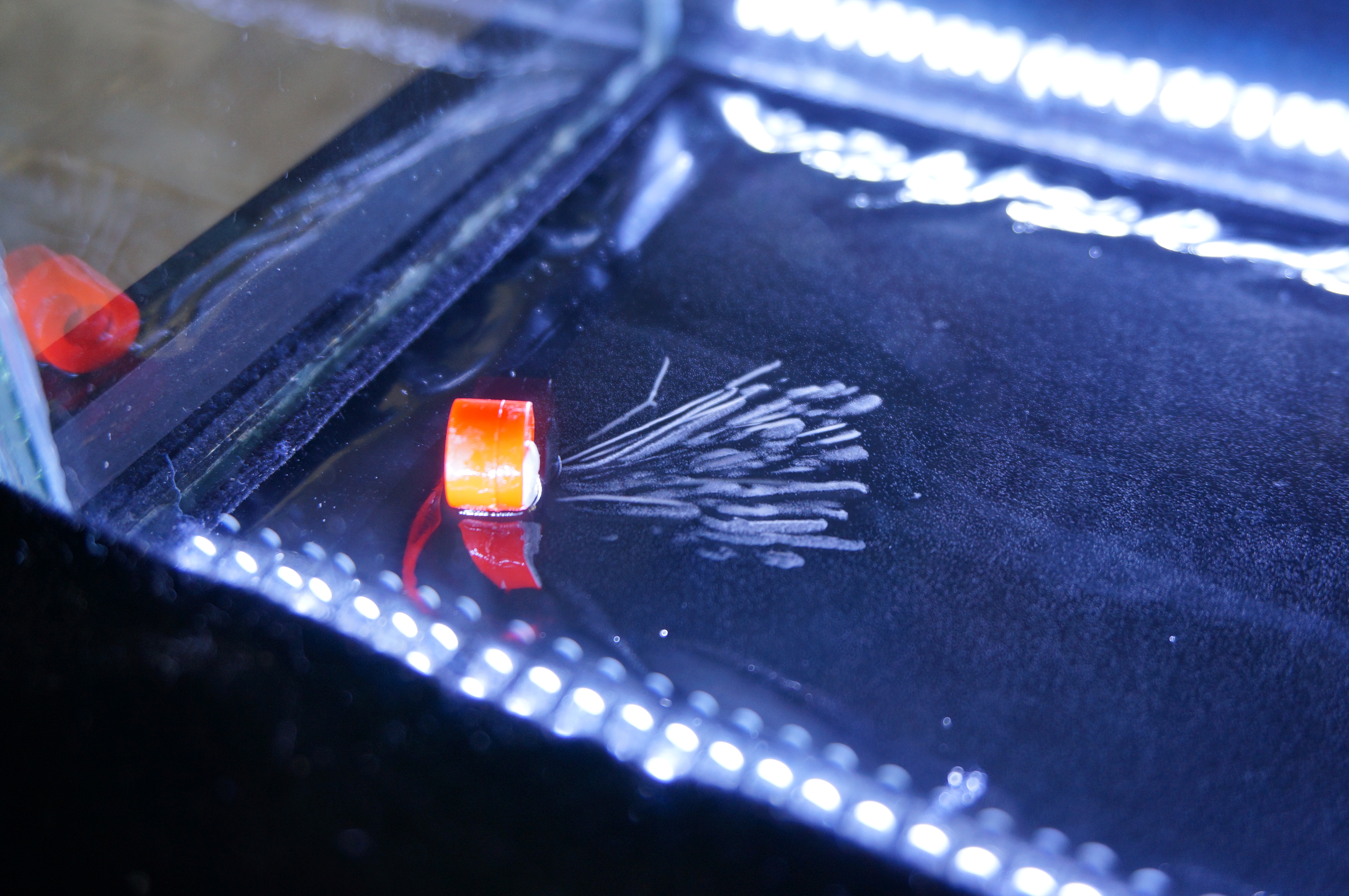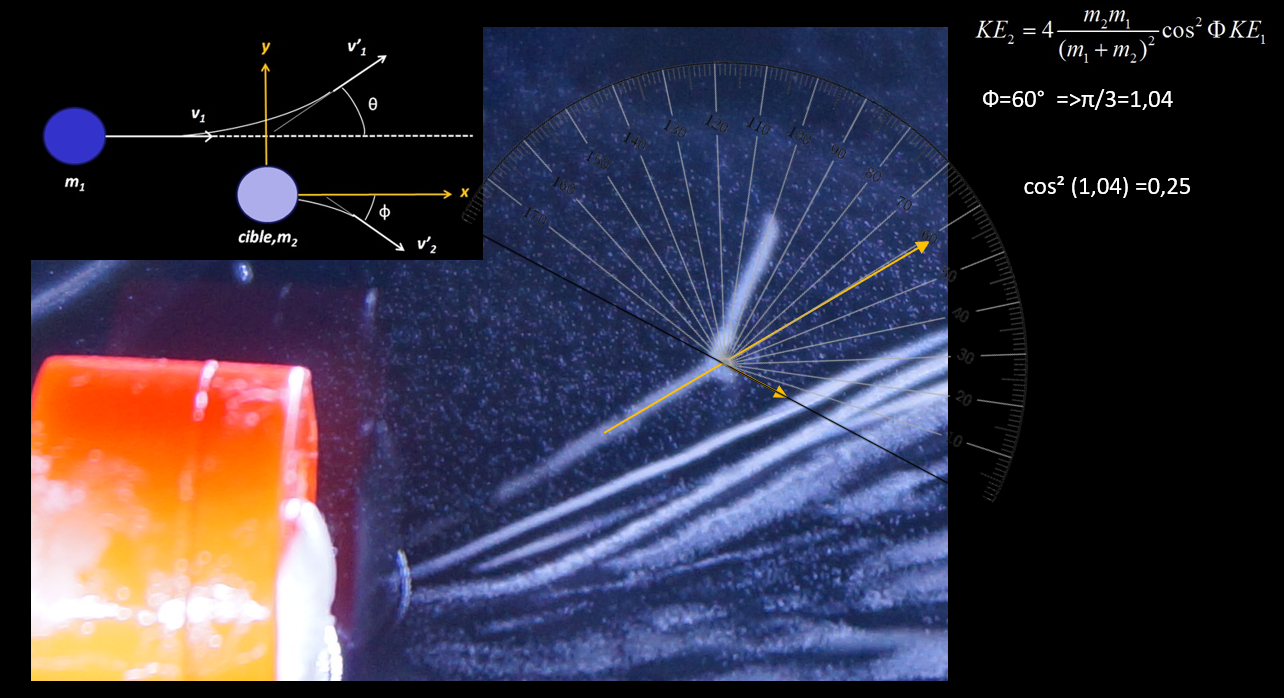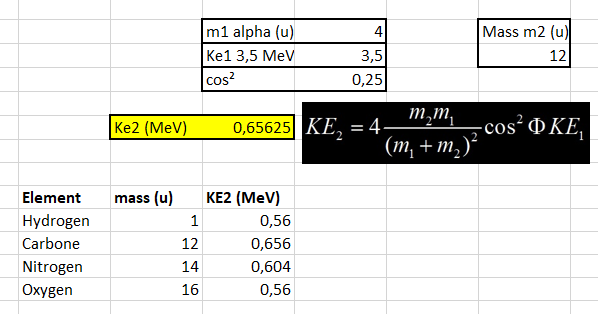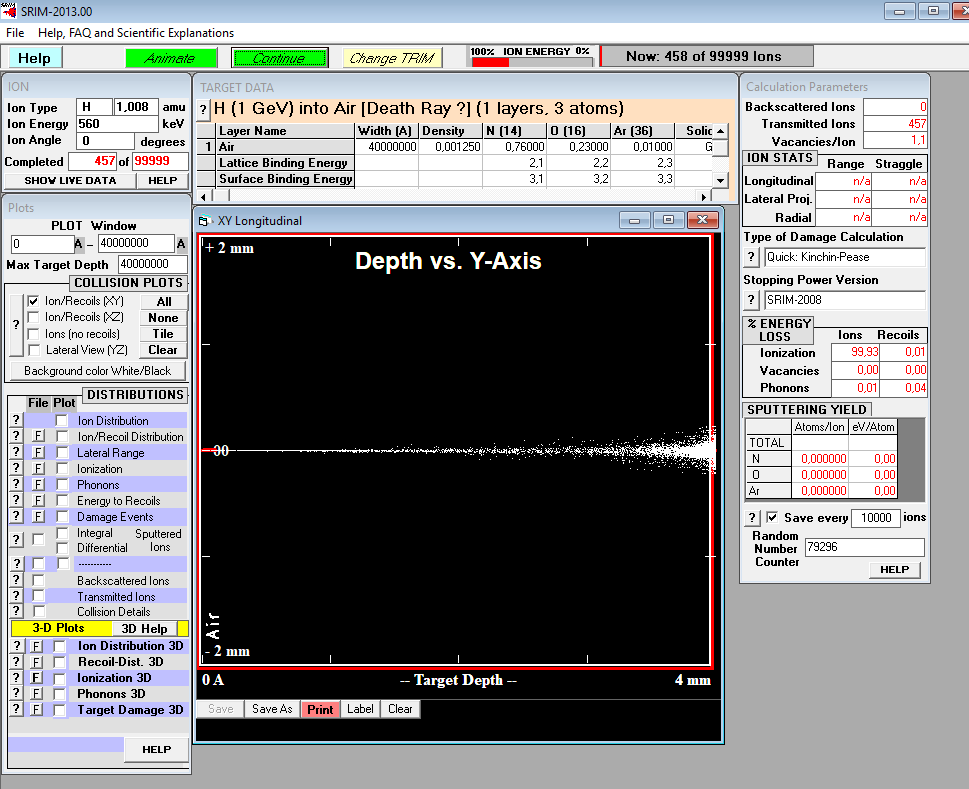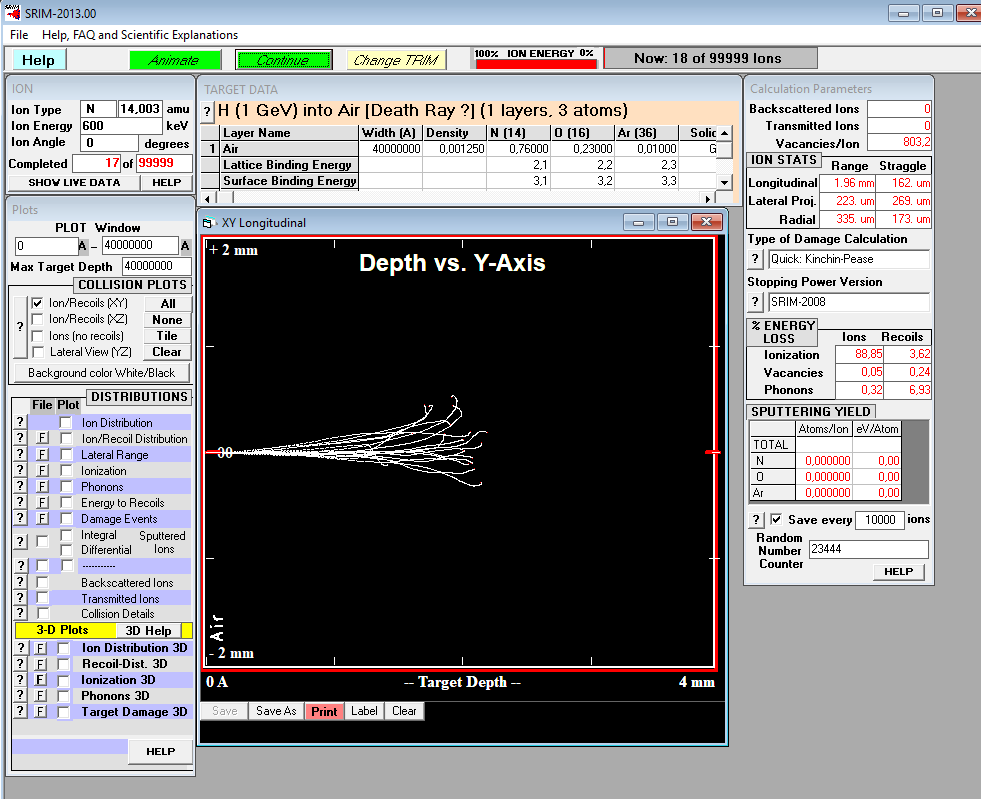From this original picture:
We can make an estimate about KE2 :
Atom present in cloud chamber : H, C, N, O
Energy of the alpha at the time of collision ?
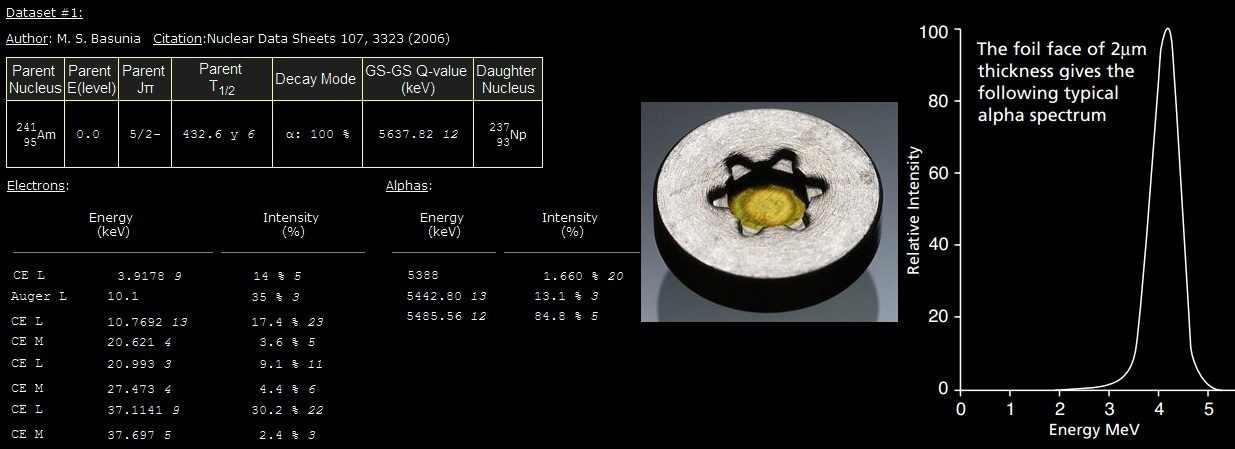
4 MeV initial, so about 3.5 MeV during collision.
Ke1 = 3.5 MeV.
Excel calculus :
So we have to simulate the energy loss in air for H, C, N, O recoil nucleus, with their KE2 calculated. For that, we will use the marvelous SRIM software which calculus the range of ions in matter (www.srim.org).
If the nucleus is hydrogen, with Ke2 = 0.56 MeV :
Recoil range is > 4 mm, or we observe something in a mm range. Can’t be a recoiling hydrogen nucleus.
If the nucleus is carbon , with Ke2 = 0.65 MeV :
 Range is compatible with observations
Range is compatible with observations
If the nucleus is nitrogen , with Ke2 = 0.60 MeV :
Range is compatible with observations
If the nucleus is oxygen , with Ke2 = 0.56 MeV :
Less range. Much more compatible with observations.
What the alpha will statistically encounter more ?

+ add more carbon from the alcohol molecule, but still low, so excluded.
Nitrogen or oxygen are much more probable to scatter an incoming alpha particle. So in a pure statistical view, this is the recoiling of a Nitrogen nucleus. We can’t know much.
